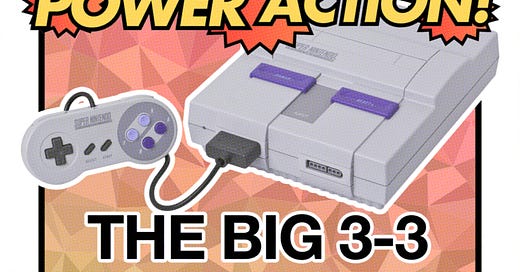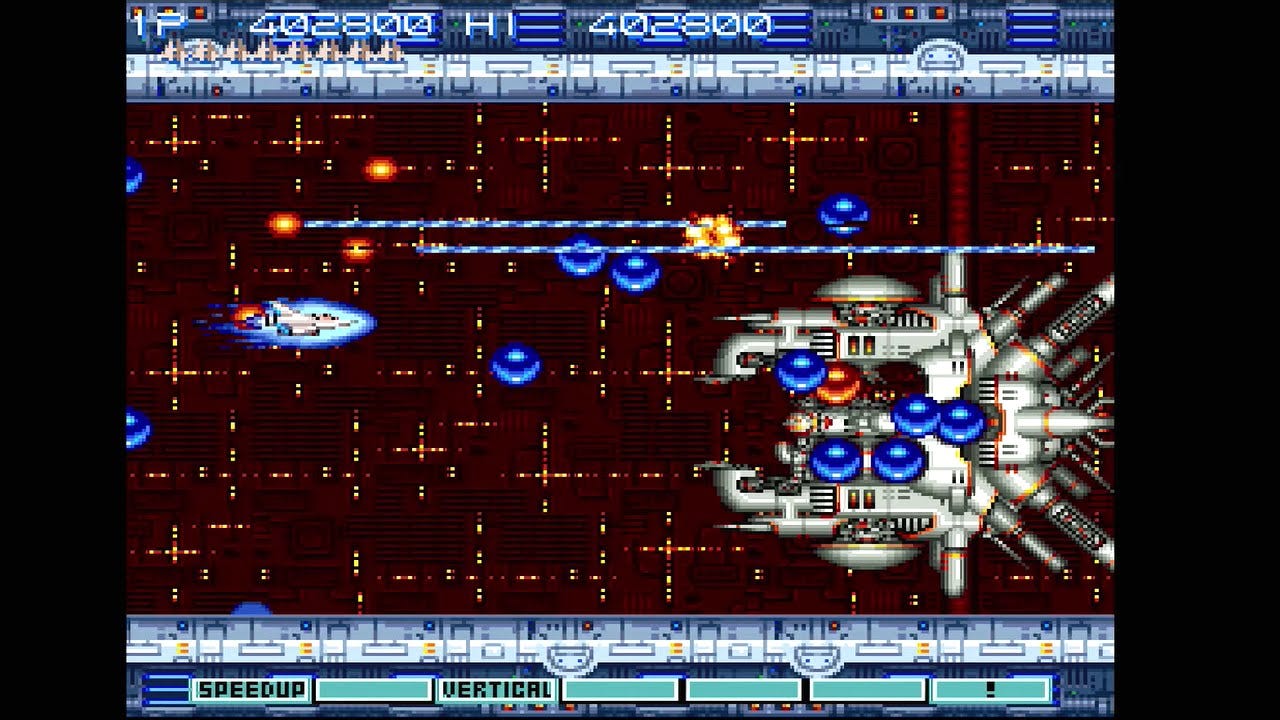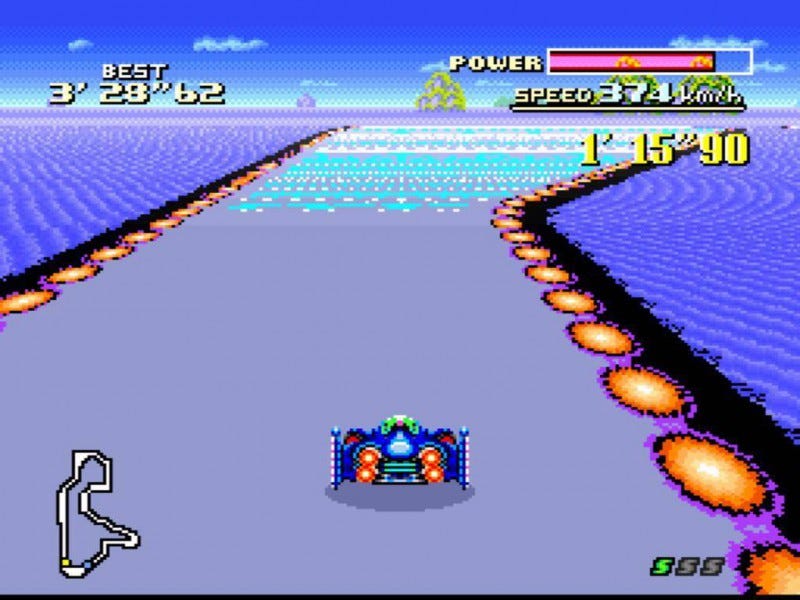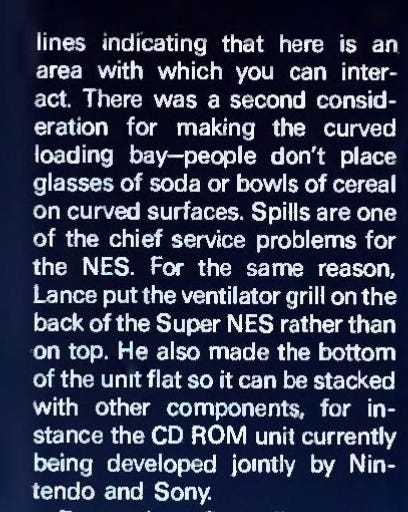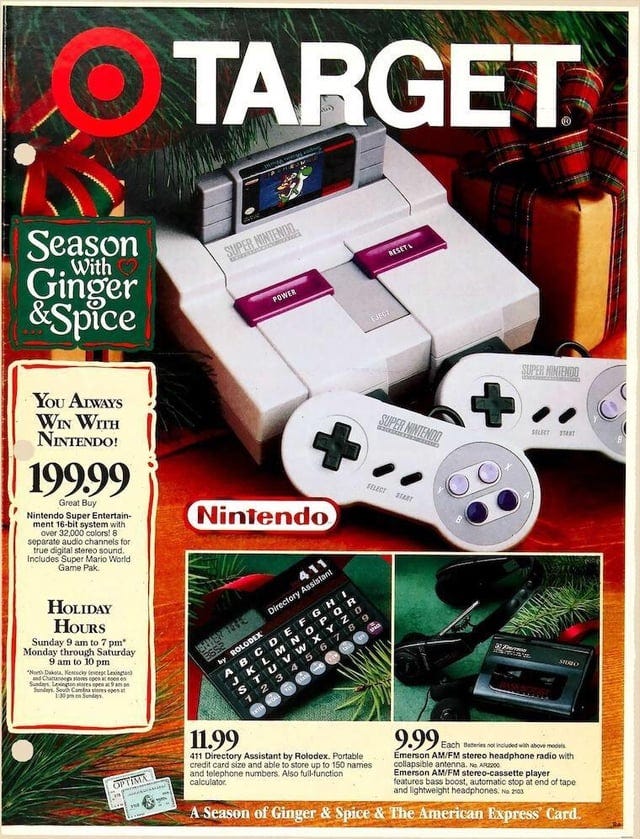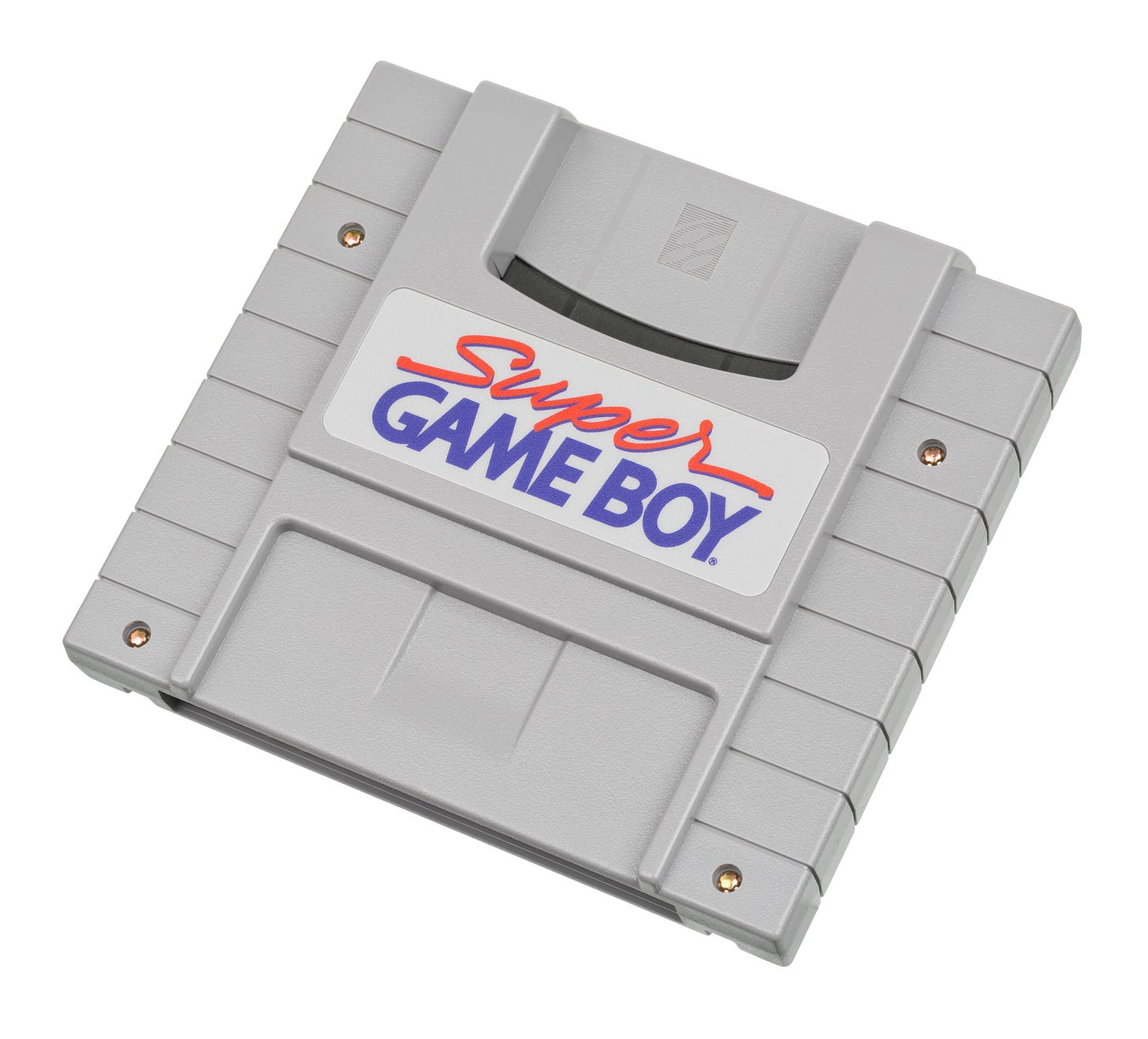The top-selling video game console of the 16-bit era recently turned 33 years old, and to mark that milestone, Power Action! is offering 13 factoids/tidbits beyond the normal “Remember Paul Rudd in that commercial?” fare.
In putting this list together, a question arose: In the grand scheme of console runs, do we underrate the Super Nintendo Entertainment System? From its massive library of games to a gorgeous array of peripherals, a case can be made that the SNES is at the top of the heap—even beyond its generation. Let’s dive in.
Ranking the Launch Games: Five titles were available with the American debut of the SNES in 1991. (It was released in the U.S. second, nine months after hitting shelves in Japan as “Super Famicom.”) Those launch games, in our order from worst to best:
Gradius III - Konami ported this arcade-style scrolling shooter that, of any of them, garnered filler status among some heavy hitters.
SimCity - This game, a '90s computer lab classic, was already a hit before its SNES incarnation. However, it sold 300,000 units for the home computer, and around 2 million on the SNES.
Pilotwings - This flight simulator was a showpiece for the console, flexing the SNES’ Mode 7 capabilities—which manipulates background layers to give off the illusion of three dimensions.
F-Zero - F-Zero not only ushered in a new era of racing in games—it created an entire subgenre of futuristic racers that spilled into anime and other arenas. (A favorite of the former category would be Redline, an absolutely insane film.)
Super Mario World - Yeah. Come on, man. Super Mario World is top 10, all-time of any console.
“I’ve Seen the Original Japanese Version of the SNES. Why Did the U.S. One Look So Different?” The North American model was designed by domestic industrial designer Lance Barr. In the June 1991 edition of Nintendo Power, Barr explained that he was given open, "blue sky” design instruction—meaning he had free rein. We’ve included his mindset, as captured by the publication. (No joke: Part of the thinking behind boxy design was due to people always setting their cups on NES and sending them to the factory for liquid damage repairs.)
“That’s Neat. But Why Did Mine Quickly Turn Yellow?” It's because of the plastics used in these early models: Sunlight and fluorescent lighting makes that particular mix oxidize. Can it be reversed? Hundreds of instructional YouTube videos say it can:
OK. It's Not the Best-Selling Console Ever. That honor goes to the Playstation 2 at more than 155 million units sold. But the SNES ruled its 16-bit era. And it beat out the following systems that are no longer producing new games: Nintendo 64, Nintendo GameCube, Xbox, Wii U (not a surprise there), and main competitor Sega Genesis, among others.
The Introduction of the Super FX Chip: You may have purchased one of the games touting a "Super FX" chip back in the day. These were coprocessors that added even more advanced graphical capabilities to the mix than, say, Pilotwings above. The chip was crafted by Argonaut Games, who helped develop Star Fox partially as a showcase for the chip. However, the chips were expensive, and even a higher pricetag for the games with the chip didn't offset the time and money needed to put into Super FX games. Thus, only a few games had the chip, including Dirt Racer, Vortex, Doom, and Super Mario World 2: Yoshi's Island.
Of all of them, Star Fox is still the most iconic—and perhaps also the best showcase of the chip. It’s hard to relate how mind-blowing this was at the time:
The Price-Tag: The SNES debuted with a price-tag of $200. Today, that would be a cost of $465. The Sega Genesis, in comparison, was $189 upon its release.
The Reign of Super Mario World: The game was the top seller for the console, at 20 million copies. That’s almost twice the amount of Super Mario All-Stars, the second-most sold.
Of the top 20 bestselling games on SNES, Mario represents more than 25%: Super Mario World (20M), Super Mario All-Stars (10M), Super Mario Kart (8M), Super Mario World 2: Yoshi's Island (4M), Mario Paint (2M), and Super Mario RPG (2M).
Non-Mario games that made the top 10: Donkey Kong Country at No. 3; Street Fighter II: The World Warrior (No. 5); Donkey Kong Country 2: Diddy's Kong Quest (No. 6); The Legend of Zelda: A Link to the Past (No. 7); Street Fighter II Turbo (No. 9); and Star Fox (No. 10).NBA Jam-Up: Acclaim's port of NBA Jam is famous for its unlockable characters, from the Clintons and Prince Charles to the Beastie Boys. But it’s also notable that a couple high-profile NBA players didn’t appear themselves. Charles Barkley only appeard in early versions of the game because he involved in the mediocre Barkley Shut Up and Jam! Shaq, meanwhile, was tied up in developments elsewhere.
Speaking of Fighting Games, Let’s Talk About Street Fighter Combos: The combo, in the context of fighting games, refers to the ability to use different combinations of attacks that, used with precision, don’t allow the other player to recover. While Street Fighter II didn’t the concept, it certainly popularized it. And yet, it was never the intention of the designers for this to be possible: Producer Noritaka Funamizu only noticed that extra hits were possible under certain conditions during a bug check. “While I was making a bug check during the car bonus stage ... I noticed something strange, curious,” he told EDGE in 2002 “I taped the sequence and we saw that during the punch timing, it was possible to add a second hit and so on. I thought this was something impossible to make useful inside a game, as the timing balance was so hard to catch. So we decided to leave the feature as a hidden one. The most interesting thing is that this became the base for future titles. Later we were able to make the timing more comfortable and the combo into a real feature. In [Street Fighter II] we thought if you got the perfect timing you could place several hits, up to four I think. Then we managed to place eight! A bug? Maybe.”
Our Favorite Secret: We actually covered this in a previous newsletter, and it involves a trip to Hyrule.
Our Favorite Speedrun: How about this one: A sub-13-minute run of the notoriously difficult SNES version of The Lion King. Who knew there were levels after the Elephant Graveyard?
The wildest part is the reasoning behind its difficulty: Disney made games like this hard because it would stretch the experience past the typical rental. Thus, they families would be compelled to buy it. The game’s creative director said so here.Our Favorite Peripheral: Remember the Super Scope? How about the Super NES Mouse used for Mario Paint? Our favorite of all the peripherals was the Super Game Boy—the then-mind-blowing device that let you play your Game Boy games on the console. Again, SNES didn’t event cross-device magic, but it certainly made it more vivid than ever .Certain Game Boy games had expanded sound when you used the device with a TV—others had additional features.
And Lastly, the Best SNES Print Ad Ever:


